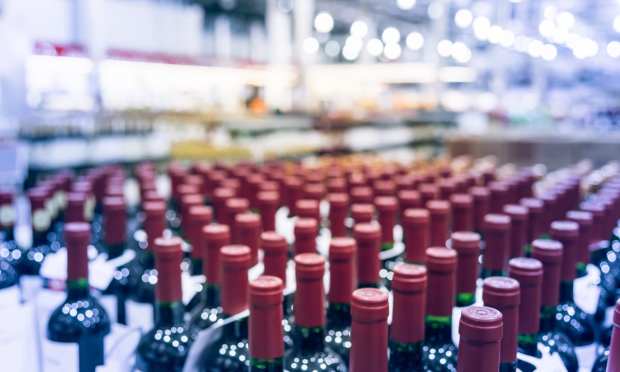Making The Alcohol Industry’s B2B Payment Rules Easier To Swallow

Managing inventory, B2B payments and a plethora of food and beverage vendors can be a headache for any kind of restaurant, bar or retailer. But in the alcohol beverage arena, unique regulations — many of which date back to the era of prohibition — have added an extra layer of complexity to the supply chain.
Retailers that sell alcohol must be able to understand exactly which products they have in stock, and which products are generating the most revenue for the business. Plus, they need to be able to efficiently pay their alcohol distributors while remaining compliant with state rules.
Despite a growing community of FinTech solutions geared toward the industry, managing invoices and B2B payments remains a challenge.
In an effort to overcome this point of friction, alcohol industry solutions provider Fintech and eInvoicing technology firm AccountsFlow recently announced a partnership. Speaking with PYMNTS, Fintech’s Vice President of Partnership Ernie DiBenedetto and AccountsFlow’s President of U.S. Operations Dan Hicks discussed how the collaboration boosts inventory visibility, and how the technology and regulatory landscape are evolving to tackle additional friction points in B2B payments workflows.
Managing The Invoice
The biggest motivation behind Fintech’s collaboration with AccountsFlow was to ensure that invoices received by retailers from their alcohol distributors could be easily integrated into QuickBooks Online, with AccountsFlow facilitating that data connectivity.
“It’s critical to get that information in a timely fashion, so retailers can update their inventory records, see where their margins are, see where they might be bleeding a bit, where they can capitalize on some times and get an order replenishment quicker,” Hicks explained of the importance of integrating invoice data into QuickBooks Online. “It’s all about the speed of getting systems updated.”
DiBenedetto agreed, noting that this data connectivity presents retailers with a way of achieving heightened visibility — which leads to the ability to more efficiently identify areas of opportunity for profitability, as well as a greater understanding of consumer consumption behavior.
But it’s not only about ensuring that invoice data is ingested into QuickBooks Online. In the alcohol beverage industry, as DiBenedetto explained, distributors tend to use proprietary abbreviations of line items.
“You might not even know what you purchased,” he noted. “There are so many abbreviations that I always say it looks like hieroglyphics.”
Fintech is able to ingest those abbreviations, translate them into understandable descriptions of each item, categorize them and then ensure that the information is connected into QuickBooks Online. Pricing information is also connected, allowing retailers to seamlessly view spend based on product type, distributor discounts and other related data points.
Keeping track of invoices and the valuable data they present can be key for a business in any industry. It’s also vital for distributors, as better management of invoicing data on the buyer side means more timely B2B payments.
Yet in the alcohol space, the ability to efficiently pay distributors isn’t just a matter of convenience.
Navigating B2B Payments Compliance
The alcohol beverage industry has some unique regulations dictating how B2B payments are made between a retailer and a distributor. Rooted in the era of prohibition, state-by-state requirements generally limit the use of credit purchases and require cash on delivery (COD).
According to Hinman & Carmichael LLP, these rules are rooted in pre-prohibition habits in which distributors would sell on credit and offer lengthy payment terms to retailers to ensure that end consumers got hooked on their products. State and federal regulations aimed to curb this practice to keep alcohol consumption at safer, more temperate levels.
While they may be decades old, these requirements remain today, and have added an extra layer of friction to the B2B payments process.
For example, explained DiBenedetto, if a business loses an invoice and fails to pay it on time, not only does a distributor no longer deliver to that business, but they actually place the indebted retailer on a blacklist so that other distributors don’t deliver to the business.
In another instance of how these unique payment regulations can disrupt operations, DiBenedetto pointed to COD requirements, which have historically meant delivery drivers were forced to carry high volumes of cash.
“That truck leaves the distributor full of beer, and it comes back full of money,” said DiBenedetto. “That’s a rolling ATM. That’s a security risk.”
While the industry eventually migrated to cash, the adoption of electronic B2B payment methods is difficult. While more restaurants are seeking to pay their distributors with credit cards, cards are a form of credit — and thus remain a “no-no” under today’s regulations, he pointed out.
Fintech is working with regulators to move these rules forward and ensure that businesses in the industry can pay and get paid not only efficiently, but also compliantly. It’s a complex regulatory landscape, but with technological innovations helping to drive progress, DiBenedetto believes that all sides of the alcohol supply chain can benefit.
“It’s being pushed from both sides,” he explained. “You have distributors looking to move products, and they want to make it as easy as possible on retailers. Retailers want to use credit cards for loyalty points, or the ability to play the float on credit.”
